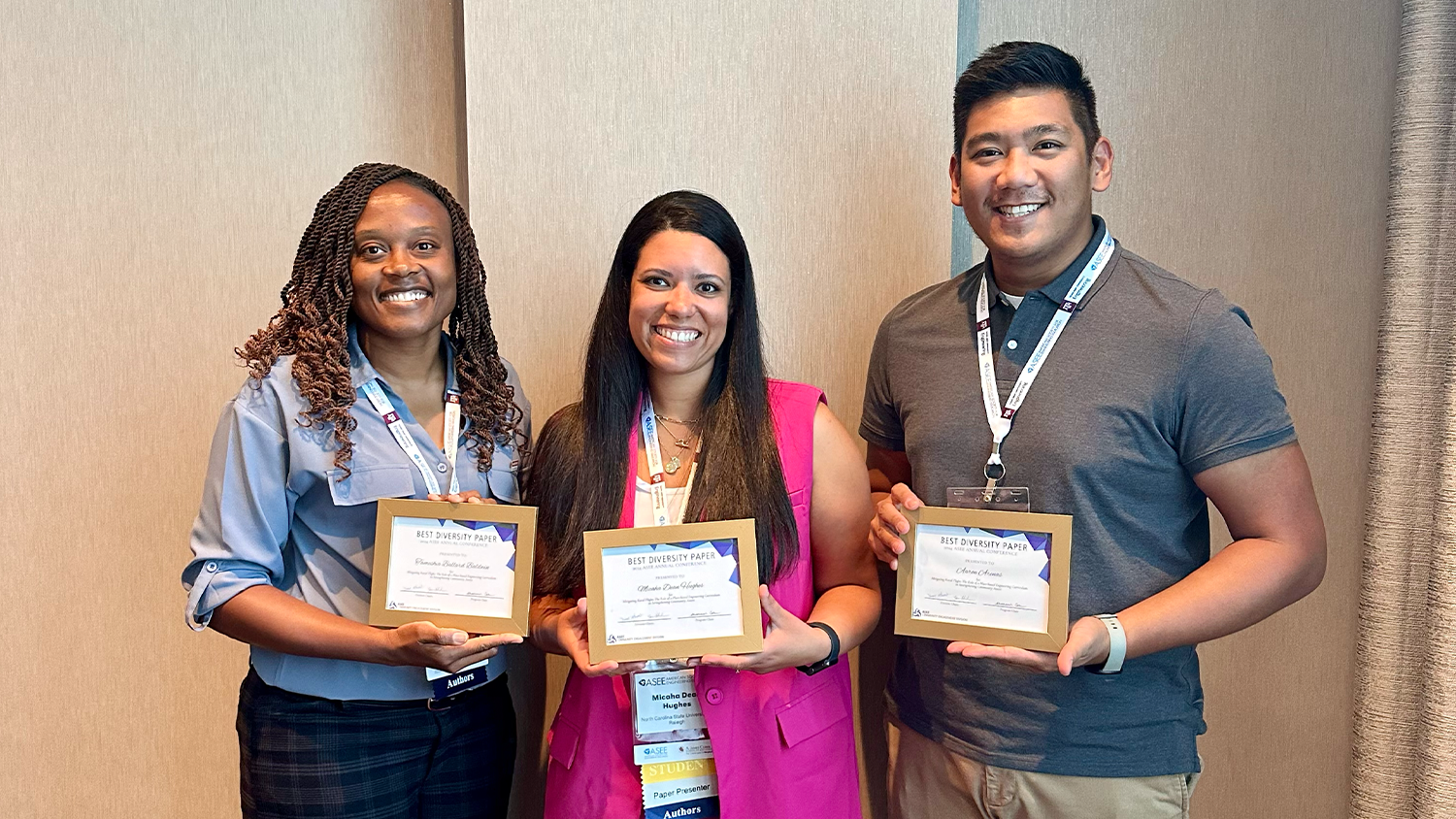3 College of Education Assistant Professors Publish White Paper to Help English Language Arts Teachers Become Anti-racist Educators

Three NC State College of Education faculty members are hoping to help educators teach toward an anti-racist future through a white paper aimed at middle and high school English Language Arts teachers.
Assistant Professors of English Education and Literacy Michelle Falter, Ph.D., Chandra Alston, Ph.D., and Crystal Chen Lee, Ed.D., began collaborating on “Becoming Anti-Racist ELA Teachers: Ways to Move Forward” amid nationwide calls for an end to racial injustice following the death of George Floyd.
Falter, who served on the Committee Against Racism and Bias in the Teaching of English (CARBTE) for the National Council of Teachers of English (NCTE), said she felt that she could help contribute something to the call for change.
“The CARBTE had been working on helping ELA teachers rethink or more deeply think about how commonly used practices privilege certain knowledges and then, by default, negate or neglect others, which therefore upholds White supremacy and contributes to systemic racism and prejudices against Black children and other students of color,” she said. “After George Floyd’s death, many people were called to do better and learn and unlearn things that enable or sustain racism in America. For me, this was a call to action.”
Falter recruited Alston and Lee to help her develop the white paper because of their shared experiences as former secondary English teachers and current teacher educators as well as their commitment to anti-racist work and critical literacy.
Also important was the fact that each of the women come from different cultural and racial backgrounds.
“Collaborations are important; they can foster deeper learning. We each come with a different set of experiences and identities yet with a common goal of supporting secondary ELA teachers and the children they teach to have equitable educational opportunities,” Alston said.
Collaborating across differences allowed the paper to present a discussion of anti-racism from multiple perspectives, thus creating different entry points into anti-racist ELA teaching for educators.
Lee said that, as an Asian American educator, she had been thinking of and reflecting upon the ways in which Asians must stand with the Black community and speak up for Black students. She drew from her own experiences with marginalization as a child of Taiwanese immigrants who spoke Mandarin Chinese at home and English at her predominately White public school. She witnessed firsthand the ways in which stereotypes were applied to her as an Asian student and how labeling students based on race can be dangerous to and internalized by students of all backgrounds.
“Collaborations and conversations with White educators and educators of color allow me to examine the complexities and articulate how and why we need an anti-racist future,” Lee said. “The work allows me to ask, ‘What deficit assumptions and expectations do we have for our students of color? How can such myths be internalized by our own students? How do teachers perpetuate myths in dangerous ways that divide and endanger our students? In turn, how can teachers dismantle these myths?’”
Through their collaboration, Falter, Alston and Lee developed five steps that can help ELA teachers work toward becoming anti-racist educators: Listen and reflect, read, interrogate, act and repeat.
The steps, Falter said, are based in critical theory and rooted in the ideas of Paulo Freire’s Pedagogy of the Oppressed, which asserts that to do critical work, one must move from consciousness towards action in solidarity with those who have been socially and historically marginalized.
In addition to outlining steps that can help educators move towards anti-racist teaching, the paper provides practical resources to help ELA teachers, including a list of about three dozen books, focused on anti-racist and culturally sustaining pedagogies within English Language Arts classrooms, schools and America. The books were chosen because they offer important insights or explicit action items for educators, and most were written by Black scholars and educators.
The paper also suggests a selection of books that can be used in middle and high school classrooms that celebrate diversity or provide insight into the experiences of Black people in the United States. This inclusion of diverse texts is crucial, as historically, the majority of texts used within ELA classrooms are written from a White perspective, Alston said.
The ultimate goal of the paper, the authors said, is to inspire ELA teachers to begin to take actionable steps toward developing justice-oriented, anti-racist classrooms that affirm the experience of all students. This approach includes examining texts, but also asks teachers to interrogate language use, writing practices and ways curriculum and instruction may harm Black students.
“If teachers really dig in, we hope that schools will be radically different places for all students. The status quo cannot be maintained. Anti-racist teaching will require teachers to give up practices and books and ways of thinking that they have held onto for a long time,” Falter said. “We hope that this document can provide middle and high school ELA teachers, English departments and schools, a course of action, and also a recognition that this work is never done and it’s not a quick fix.”
- Categories:


